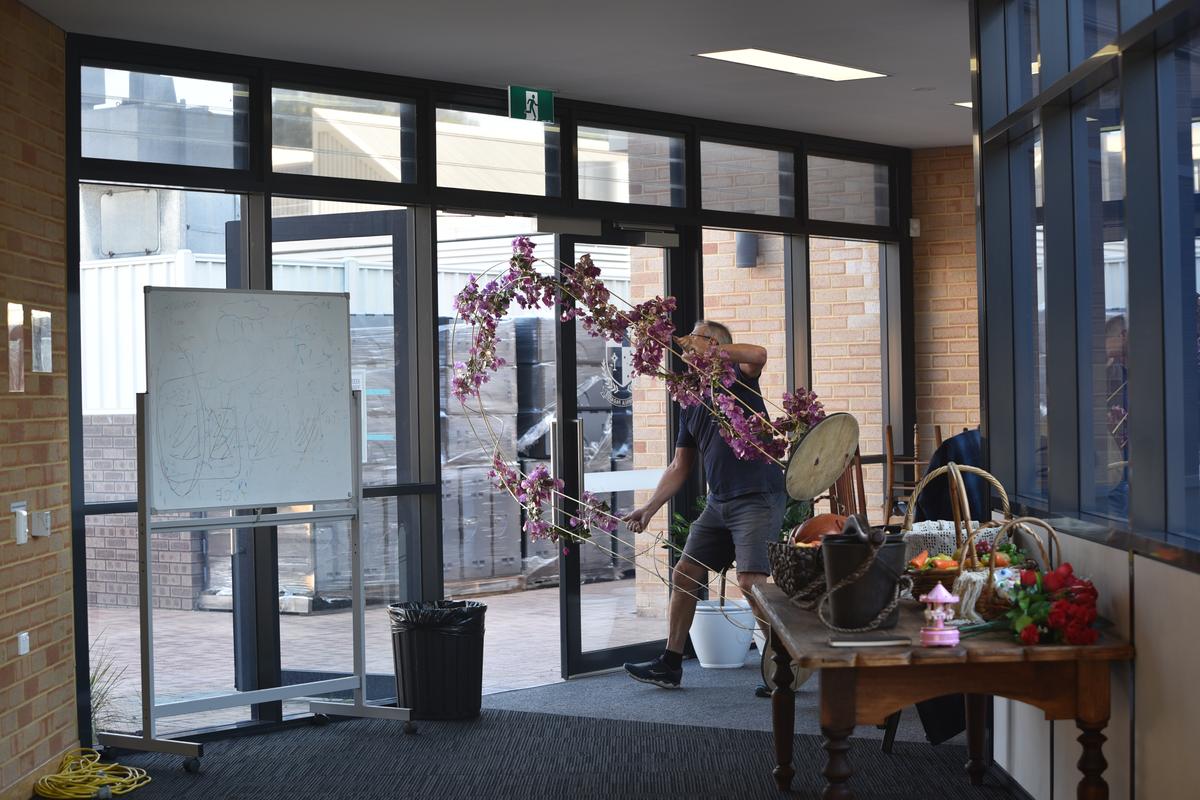Staff in Focus
Technician Mark Lawson

Staff in Focus
Technician Mark Lawson
More than 50 cast and crew and Arts staff have been involved in the creation of Cinderella at the Xanten Theatre this week, including Mr Lawson - who created props for the spectacular set. Mr Lawson is a technician in the wood, metal, textiles, art and design areas of the Technologies Department and makes anything the teachers need to support their programs and ensure everything in this learning area works and is safe. Mr Lawson studied Industrial Design at university, worked as a designer for 20 years then became a lecturer at TAFE and Curtin University before joining St Norbert College six years ago. He’s even a world-record holder!
SNN: Congratulations on your triumphant contribution to Cinderella: the Enchanted Edition! Please talk us through the making of that beautiful pumpkin coach . . .
ML: Well, the production of all sets follow the same design process. It begins with reading the script and discussing it with the director Miss Hilton and production manager Mrs Freind to coordinate thoughts and list the items required for each scene. I sketch on paper and iPad concept ideas and make samples and visual references to present to the director. Coordinating with the rehearsal activity is vital as the actors only see the sets at the end. Following discussion I draw to scale in Illustrator the main details and calculate all material requirements. Sets needs to be light and mobile, totally practical and provide a shape and surface for paint and lighting to create a scene that highlights the actors. It does take a bit of time, space and workshop facilities to build but SNC is well set up for this.
Structural plywood is the main material for the pumpkin coach, thick for the strong bits and thin for the visual bits, and 18 castors! The coach is central part of the Cinderella dream so the reveal is all important. Of course the details of the pumpkin remain a trade secret!


SNN: And the staircase and balcony . . .
ML: The stairs are recycled from the 2018 production Oliver with a few additions. All the sets are built so they can be re configured. The balcony is built using eight recycled old desks. The balustrade fits into the legs of the old desks. Laser cut foam on the panels keeps the balustrade light as it has to remove.
SNN: Is there no end to your talents?
ML: Well. very flattering thank you. But I was very lucky to have brilliant teachers and free education when I studied design at College 40 years ago. So with all humility I would answer, “no”....!
SNN: What are some of the other incredible things you have crafted for St Norbert College productions?
ML: The bridge we built for Oliver was good. I was glad I made it strong when I saw the actors dancing and running over it. I like the trunk for ‘Around the World’. Totally fake but real, a perfect prop.
SNN: Where did your love of design technology begin?
ML: I like designing and building with all materials but wood is the most adaptable. From a young age I would avoid doing homework by climbing out of an upstairs window and disappearing into the shed to make things. Mum never knew, but I suspect she did, she was a teacher and they know.
SNN: How did you hone your craft?
ML: The six years at university were helpful! Always by doing, experimenting and watching closely. Reading books and magazines would be probably the most precious knowledge gained over a lifetime. I feel lazy YouTubing things now but it is very effective.
SNN: Why did you decide to move into education?
ML: 20 years ago I did a talk for a design friend at TAFE. I was amazed the students were so inquisitive for knowledge. I ended up getting a job there.
SNN: What are some of the things you teach our students?
ML: Listen to your teacher, always be safe and don’t leave rubbish for me to pick up!
SNN: How important is it for young people to learn to make things by hand?
ML: Well, you make things in your head, the hands just carry out the instructions. So if the question is ‘How important is it for young people to learn to think?’ – very, in all activities not, just of a practical nature.
SNN: Outside of the College, what are your hobbies/gifts/interests?
ML: Apart from the West Coast Eagles and the Western Force I do have a passion for historical buildings and their contents. Particularly the Arts and Crafts period. All the visual arts appeal and travelling to find them is special. Making and fixing anything is routine for me, practically essential with a family and economically useful. I keep fit with various strenuous exercises activities and race kayaks. I’ve represented Australia in marathon kayak racing at masters level in world championships winning gold in singles and three silvers in doubles.
SNN: What is your all-time favourite body of work?
ML: Probably renovating our character home. Good restoration work is invisible, and passes on through generations. And the home is central base for children in a happy, busy family life.
Mrs L Quartermain
(Community Relations and Marketing)